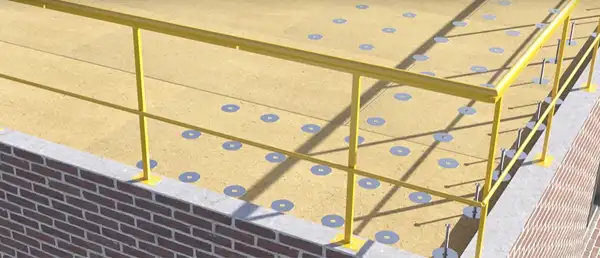#AskCentiMark Series: Understanding commercial roof attachment methods.

Hi again! It's Anne Serzz, your commercial roofing advocate! As you know, there’s a wide variety of commercial roof systems on the market. Did you know there are also various ways to attach those systems?
The attachment method plays a critical role in the longevity, durability and overall performance of your roof system. Whether you’re looking to install a new commercial roof or simply maintain your existing one, having a deeper understanding of the attachment techniques can help you make better roofing decisions in order to:
✔ Ensure code compliance
✔ Improve waterproofing
✔ Optimize maintenance costs
✔ Plan for future roofing projects
Let's take a closer look at the most common forms of commercial roof attachment, their unique benefits and which systems use them:
Adhered:
This form of attachment bonds the membrane directly to the insulation or other substrate using a strong adhesive or low-rise foam, eliminating the need for fasteners or mechanical attachments. An adhered roof system is known for securing the membrane across the roof assembly, preventing water intrusion while offering extreme flexibility.
Often used in: Thermoplastic Olefin (TPO), Polyvinyl Chloride (PVC) and Ethylene Propylene Diene Monomer (EPDM) commercial roof systems.
Mechanically attached:
A mechanical attachment method involves securing the membrane to the roof deck with fasteners and plates. Since it is laid out and fastened at specific intervals, with more attachment points around the perimeter, it is a good choice if you’re looking for a quick installation process. This form of attachment is renowned for its durability against wind uplift and storm damage, so if your building is constantly affected by hurricanes or tornadoes, a mechanically attached roof is the way to go!
Often used in: TPO, PVC, EPDM and metal roof systems.
Induction welded:
This innovative attachment method is done through a weld between the membrane and the mechanically anchored plate that has been fastened to the deck! An induction heat tool is used to fuse these two and then the seams are welded providing a seamless attachment which is particularly applauded for waterproofing. If your building is located in an area with frequent rainfall or humid conditions, an induction welded method might be the best choice for you. Since it creates an airtight seal to avoid moisture intrusion and prevent thermal loss, it can also improve energy efficiency and help save on heating and cooling costs.
Often used in: TPO or PVC commercial roof systems.
Ballasted:
This method uses gravel, pavers or concrete blocks to hold the roofing membrane in place. The ballast provides strong fire resistance. Furthermore, since there aren’t any attachment points into the roof deck, the risk of leaks is minimized and installation is quicker. A ballasted roof is an excellent choice due to the lower cost of materials.
Often used in: EPDM and Built-Up (BUR) commercial roof systems.
As you can see, there is no “one size fits all” rule for commercial roof systems and their attachment methods. Now that you know the different types of installation methods and their benefits, you can make better roofing decisions! However, you need a knowledgeable contractor to learn about your building and operational needs to tailor an application that works best for you. We are here to help you choose the right one to help your roof withstand the outdoor elements for years to come!
Interested in a comprehensive inspection to learn what’s above your head? Click here.
When you subscribe to the blog, we will send you an e-mail when there are new updates on the site so you wouldn't miss them.
